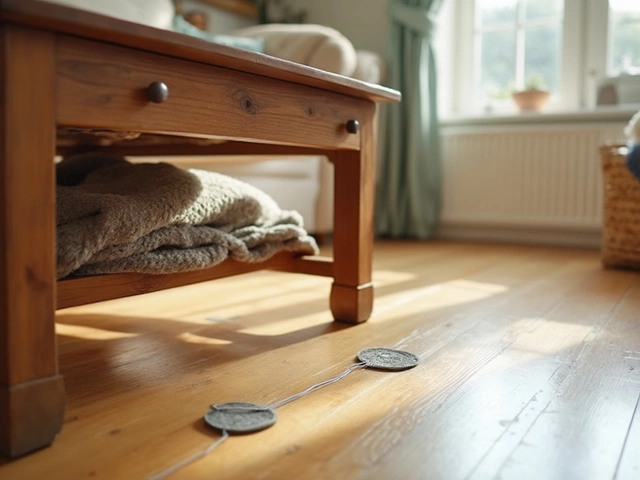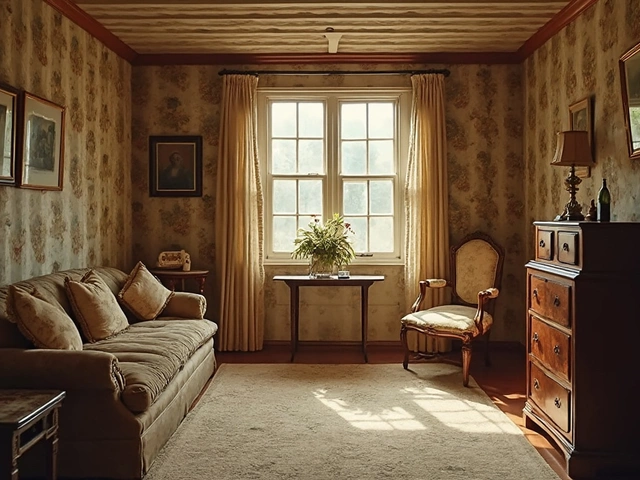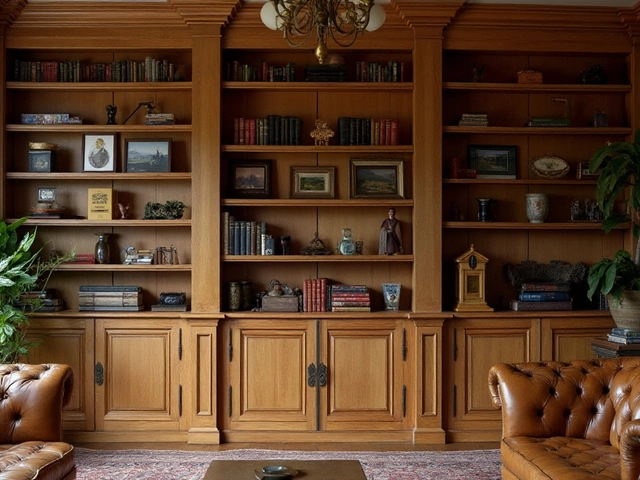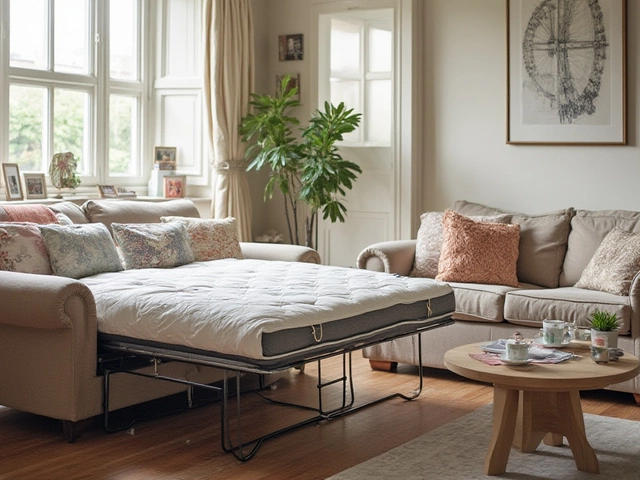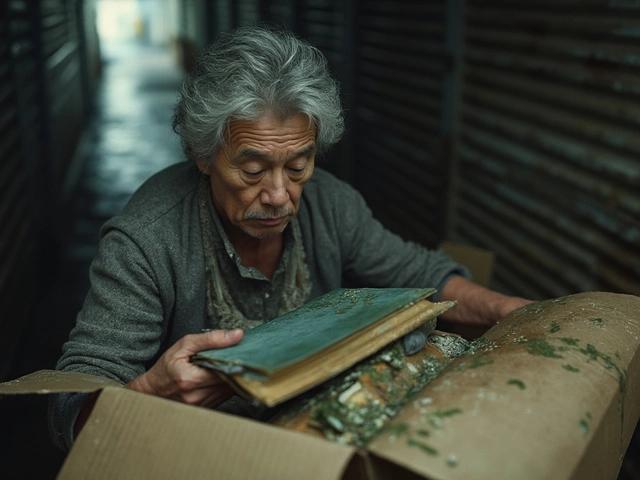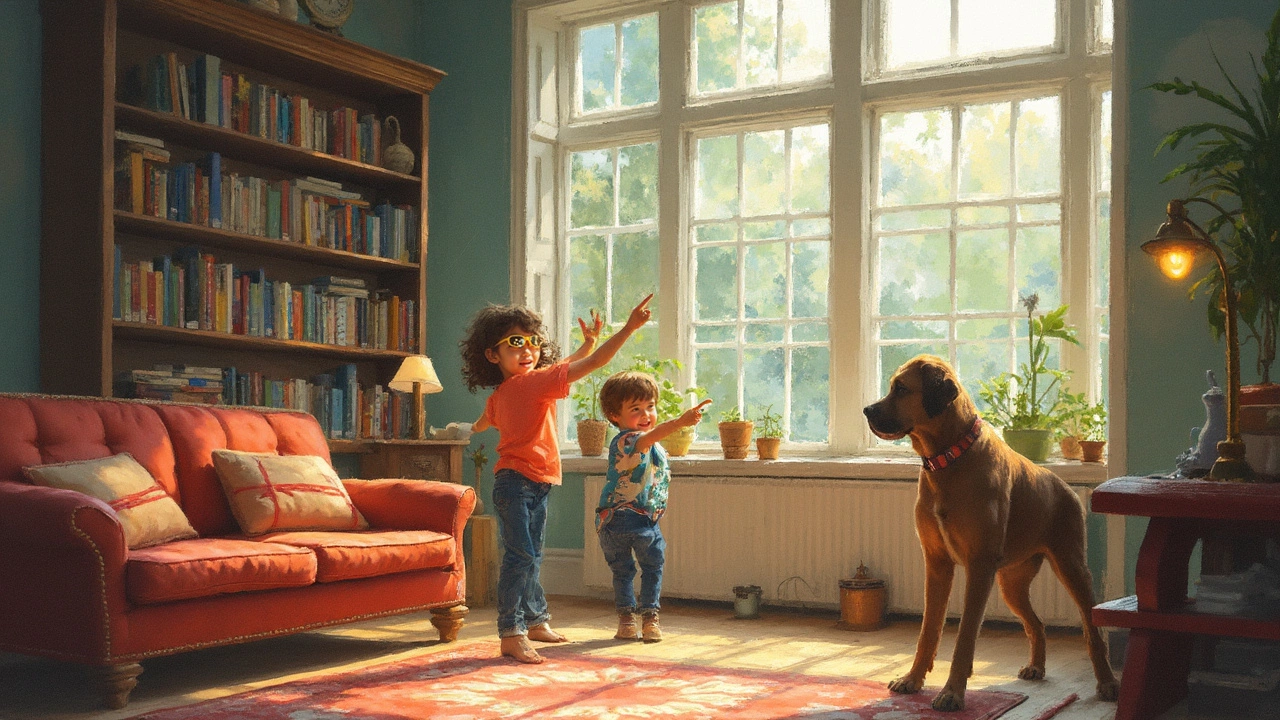 31
Mar,2025
31
Mar,2025
So, you’ve got this beautiful new bookcase ready to be filled with your collection. But there’s this nagging question: should you anchor it? Honestly, it’s something a lot of us skip during excitement, but it’s worth diving into. Think about it. A bookcase is tall, often heavy, and loaded with stuff. We put books, picture frames, and random knick-knacks on it. Imagine the chaos if it starts to wobble or, worse, tips over.
The reality is, regardless of how sturdy it feels, once you have enough weight on one side or if someone accidentally knocks into it, it could tip over. This is especially a concern if you have little ones running around. Kids love to climb on everything, and pets might see your shelves as an adventure park.
- Why bookcases tip over
- The dangers of unsecured bookcases
- Evaluating your need to anchor
- How to anchor your bookcase
- Tools and tips for anchoring
- What to do if you can't anchor
Why Bookcases Tip Over
Alright, let's get into why bookcases have this unfortunate tendency to tip over. First off, it’s all about design and balance. Most bookcases are tall but narrow. Picture them like a giant, top-heavy Jenga tower. That makes them prone to losing their balance, especially when weight shifts suddenly or unevenly.
Now, what really sets things in motion is the placement of heavy items on higher shelves. When the heaviest books and objects are up top, the center of gravity moves up, making tipping more likely. Remember, it doesn’t take much—a push from a pet, or someone pulling out a book too forcefully, and you have a disaster waiting to happen.
Loose or uneven floors can also play a part. Older houses might have floors that aren’t perfectly flat, which is a recipe for instability when it comes to tall furniture. If your bookcase is wobbling a bit on an uneven surface, it’s basically crying out for some support.
And, let’s give a shoutout to curious kids. Small children have this thing for climbing anything they can reach. They see the bookshelf as a challenge to conquer, not realizing the risk of the whole thing flipping over on top of them.
All these reasons make it super important to consider securing furniture. A simple anchoring will save you a lot of grief—and possibly prevent a nasty accident.
The Dangers of Unsecured Bookcases
It might not cross your mind daily, but unsecured bookcases can be a serious safety hazard. These towering giants, if left unattended and not anchored, pose a significant risk, particularly in homes with children or pets. You might think, "Oh, it's sturdy enough!" However, even the most robust-looking bookcases can be precarious.
Consider this: reports have highlighted that each year, thousands of people, especially young kids, get injured due to furniture tipping. The U.S. Consumer Product Safety Commission even runs a campaign to highlight the danger of furniture tip-overs. Why? Because it’s not just a bump or a bruise we’re talking about here—sometimes, it’s much more severe.
Take a look around your home. Kids are naturally curious, and they love to explore. A simple game of hide and seek can turn dangerous if that bookcase decides to fall. Not to mention, pets have a knack for getting into things. Just one jump can send your collection and the bookcase toppling.
Here's the thing—a tipping bookcase doesn’t just put your family at risk; it can also be a costly accident. Fixing a dent in the wall, replacing broken books, or even buying a new bookcase is an expense you might prefer to avoid.
- Heavy books or items placed on top or edge of shelves can increase tipping risks.
- On unsteady floors, the bookcase might lean, adding to the danger.
- In some areas, like earthquake-prone zones, the risks are significantly higher.
So, anchoring isn’t just a "good-to-have" measure. It’s essential for making your home a safe and secure place. Create a safer environment without too much hassle, because why risk it when it’s avoidable?
Evaluating Your Need to Anchor
Alright, let’s dig into whether you should actually anchor that bookcase. It’s not just a random step; it’s a crucial consideration in your home setup. First thing to ponder is the stability of your bookcase’s foundation. If it’s one of those tall and skinny types or placed on plush carpeting, it’s more prone to tipping.
Next, consider who’s sharing your space. Got kids? Pets? They’re curious wanderers and might bump or try to climb on your shelves. Anchoring becomes even more crucial in these scenarios to prevent any risks of tipping over.
Then there’s the earthquake factor. If you live in an area prone to tremors or shifts, securing your bookcase can prevent an unexpected slide or fall.
And hey, think about what you’re putting on those shelves. Heavier items should be placed lower to strengthen the bookcase’s center of gravity. If you’re stacking heavy books or items on the top, you definitely want that extra stability from an anchor.
Honestly, it's about balancing aesthetics with safety. A short, wide bookcase snugly fitted into a tight space might not need an anchor as urgently as a towering bookshelf on uneven flooring.
So, take a good look at your setup, assess the risks, and go from there. It’s better to be safe than sorry, right?
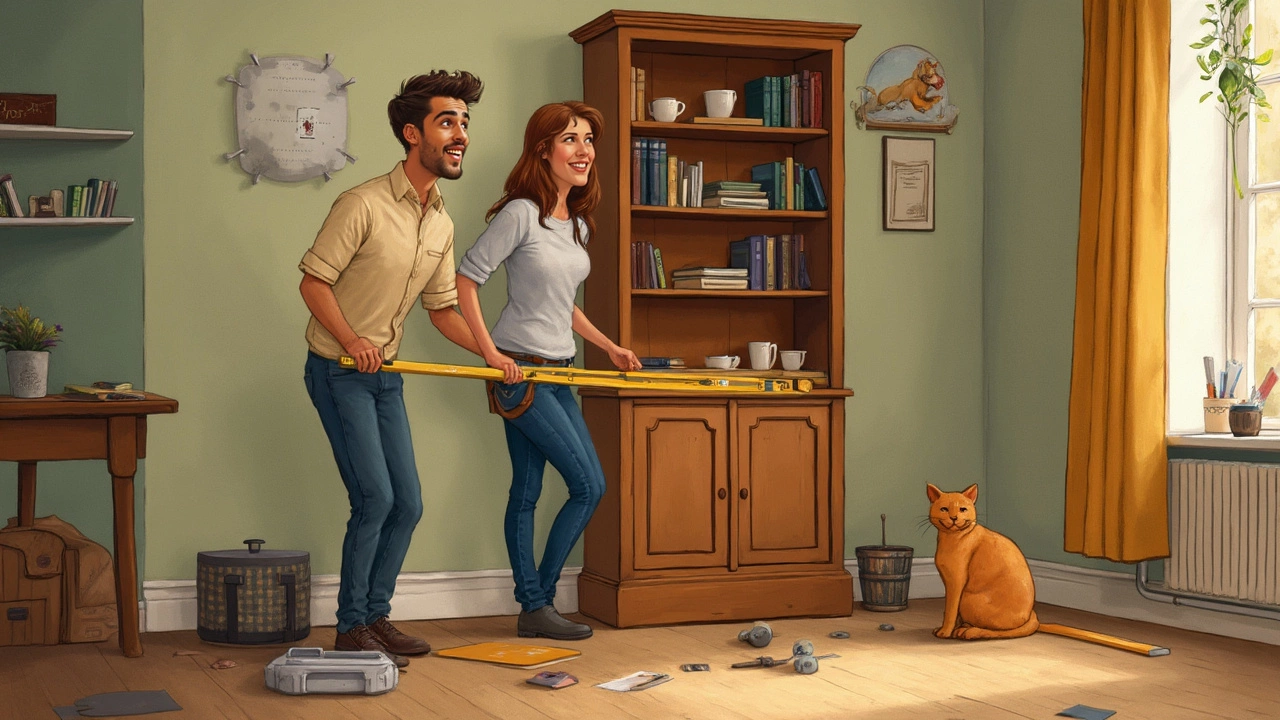
How to Anchor Your Bookcase
If you’ve decided that anchoring your bookcase is the way to go, then let’s get you set up safely. You don’t need to be a handyman to tackle this, just willing to roll up your sleeves a bit. Here’s how you can do it:
The first thing you’ll want to do is gather some essential tools. Typically, you will need a stud finder, a drill, screws, wall anchors, and the actual anchoring kits, which often include straps or brackets. These kits are usually available in hardware stores and often come with all-in-one solutions designed just for this task.
- Find the Studs: Use a stud finder to located the wooden beams (studs) behind your wall. Anchoring your bookcase into a stud provides the most secure hold. If finding a stud isn’t possible, go for heavy-duty wall anchors.
- Position the Brackets: Attach the brackets to the top of the bookcase. Position them in a way that when they're secured, they'll match up directly with the studs or the wall anchors you’ll be using.
- Drill into the Studs/Walls: With your drill, create holes in the wall where the anchors will go. If you’re using wall anchors, insert them into the holes you drilled.
- Screw the Brackets: Once the anchor points are ready, screw the other side of the bracket into the wall. Ensure they are tightly fastened to avoid any wobbles.
- Secure the Bookcase: Finally, secure the bookcase anchoring straps or brackets. Give your bookcase a gentle push to test it. It should hold firm against the wall.
And there you have it! Anchoring not only gives you peace of mind but also prevents those surprise moments when you least expect them. It’s about creating a safe space without sacrificing style. Keep your home safety a priority!
Tools and Tips for Anchoring
Ready to tackle the job of anchoring your bookcase? You don’t need to be a DIY expert; just gather the right tools and follow a few straightforward steps to secure your furniture.
First up, let's talk tools. You’ll need a stud finder, drill with bits, screwdriver, measuring tape, anchor kits (most furniture retailers sell them), and a pencil for marking. Got them all? Great, now let's move onto the actual process.
- Find the Studs: Use a stud finder to locate the wooden beams in your wall. These studs are what you’ll attach your talismans to. Mark the spots with a pencil.
- Measure and Mark: Measure from the top of your bookcase down to where you'll install the brackets. Mark the corresponding spots on the wall where the brackets will be fastened.
- Install the Brackets: Drill holes into the wall where you've marked, ideally right on the stud. Secure the brackets to the wall using screws.
- Attach to the Bookcase: Once the wall brackets are set, attach the other half of the kit to the top of your bookcase. Use a screwdriver to tighten those screws.
- Connect the Dots: Final step, attach the bookcase to the wall by connecting the two parts of each bracket. Ensure everything’s nice and tight.
You might be wondering, "How do I know it’s tight enough?" A good nudge test should tell you. Give the bookcase a gentle push to see if it holds steady. If it’s still budging, double-check your bracket connections.
And a quick tip from the pros: if your home has drywall without access to studs, you’ll need wall anchors. These spread the load across a larger area, reducing the risk of the screw being pulled out.
To give you some peace of mind, here's a stat from the Australian Safety Commission: properly anchored bookcases can reduce tipping accidents by about 70%. That's a pretty convincing reason to break out the power drill, right?
What to Do If You Can't Anchor
Sometimes, anchoring a bookcase just isn’t possible. Maybe you’re renting, your walls are made of materials that aren't easy to drill into, or you just don’t own the right tools. Whatever your situation, there are still ways to keep your bookcase and the rest of your home safe.
First off, try to distribute the weight evenly across your bookcase. By placing heavier items like large books or storage boxes on the lower shelves, you’ll lower the center of gravity. This will help minimize the risk of tipping.
Better yet, consider using furniture safety straps. These straps are adjustable and attach from the bookcase to a piece of furniture or another secure surface. They don’t require drilling and are incredibly user-friendly, making them a popular choice among renters.
Another clever tip is to use a non-slip mat or furniture grippers. Place these under the base of your bookcase. They’re great for keeping your furniture from sliding, especially on hardwood or tiled floors. Just make sure the mat is large enough to cover most of the contact area under the bookcase.
Finally, positioning matters. Move your bookcase into a corner or against a side wall whenever possible. Having two walls for support can make a big difference. Also, avoid placing it in high-traffic areas where it's more likely to get bumped or nudged.
While these solutions might not provide the same peace of mind as a fully anchored bookcase, they’re practical alternatives that can help maintain both safety and style in your living space without needing to make permanent changes.
